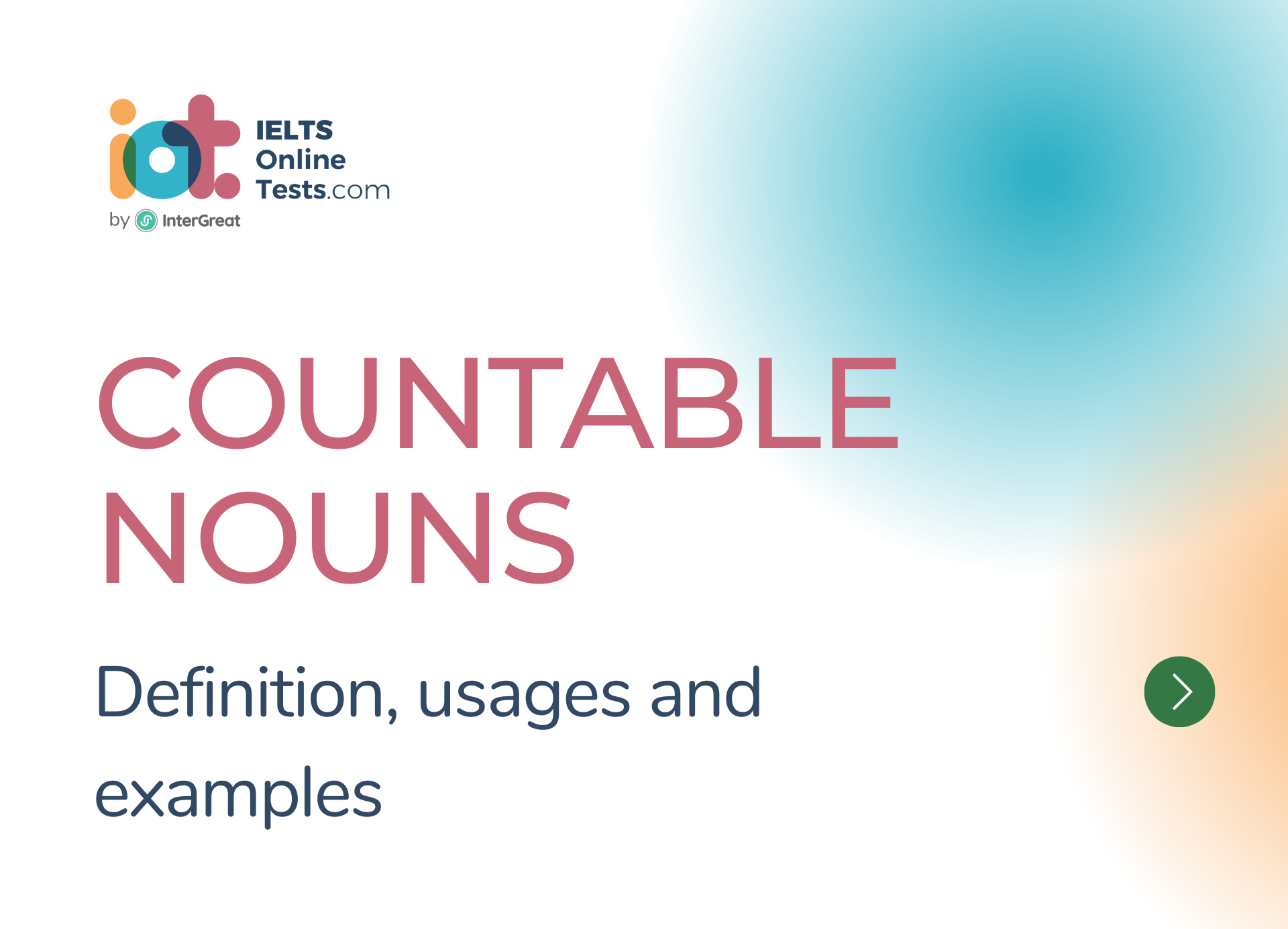
Countable Nouns
Countable nouns, also known as count nouns or countables, are nouns that can be counted as separate individual items or units. They have both singular and plural forms and can be used with numerical quantities or quantifiers.
Here are some key points to understand about countable nouns:
Singular and Plural Forms: Countable nouns have distinct singular and plural forms.
- Examples:
- cat (singular), cats (plural);
- book (singular), books (plural).
- Examples:
Counting and Quantifying: Countable nouns can be counted or quantified using numbers, indefinite articles (a/an), and other quantifiers.
- Examples:
- three cats, an apple, many books, a few students.
- Examples:
Quantifiers: Countable nouns can be used with quantifiers to indicate a specific or approximate quantity.
- Examples:
- some, any, several, few, many, a couple, a dozen.
- Examples:
Subject-Verb Agreement: Countable nouns influence the agreement between the subject and the verb in a sentence. When a countable noun is singular, the verb is singular, and when it is plural, the verb is plural.
- Examples:
- The cat is sleeping. (singular noun)
- The cats are playing. (plural noun)
- Examples:
Individually Identifiable: Countable nouns refer to objects or entities that are distinct and can be seen as separate items.
- Examples:
- desk, chair, student, car, pen.
- Examples:
Plural Formation: Countable nouns form their plural by adding "-s" or "-es" to the singular form, although there are irregular plural forms for some countable nouns.
- Examples:
- cat (singular), cats (plural);
- box (singular), boxes (plural).
- Examples:
Used with Articles and Determiners: Countable nouns are used with articles (a/an, the) and other determiners to specify or refer to particular instances.
- Examples:
- a cat, the book, these chairs, his pen.
- Examples:
- More examples of countable nouns:
Animals: dog, cat, bird, elephant, lion, fish
Objects: chair, table, book, car, phone, computer
People: student, teacher, friend, child, doctor, musician
Foods: apple, banana, cookie, sandwich, pizza, cupcake
Vehicles: car, bicycle, motorcycle, bus, truck, airplane
Clothing: shirt, dress, hat, shoes, socks, gloves
Toys: ball, doll, puzzle, teddy bear, toy car, building blocks
Containers: box, bag, jar, bottle, basket, suitcase
Instruments: guitar, piano, violin, flute, drums, trumpet
Plants: tree, flower, plant, bush, grass, vegetable
Sports: ball, racket, bat, glove, skateboard, bicycle
Buildings: house, school, hospital, office, museum, church
Utensils: spoon, fork, knife, plate, cup, bowl
Stationery: pen, pencil, eraser, notebook, marker, scissors
Countries: Brazil, Japan, Australia, Canada, France, India
Countable nouns are crucial in sentence construction and enable us to quantify and specify quantities of objects or entities. They play an essential role in communication by allowing us to express numbers, make comparisons, and describe quantities. By understanding countable nouns, you can effectively convey information about quantities and make your writing or speech more precise.




